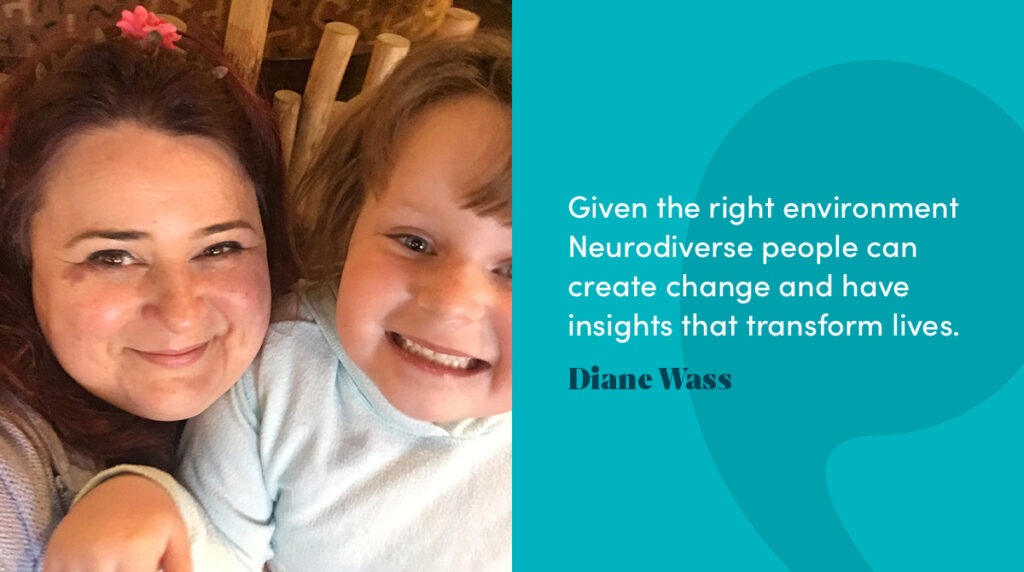
“To be yourself in a world that is constantly trying to make you something else is the greatest accomplishment”
Ralph Waldo Emerson
I am proud to say I have ADHD. It is what drives my insatiable curiosity and enables me to ask a million questions in parallel. Having a mind that bounces around at a million miles a minute enables you to spot patterns and trends that others miss, and it allows you to dig deeper for insights and conclusions that do not sit in the confines of the metaphorical ‘box’ (or the ‘human-set’ boundaries of an AI-machine learning tool-although I do enjoy them as a partner in my lateral thinking!). I wouldn’t want to give it up, as it is, without a doubt, my biggest gift.
Like many parents of neurodiverse children, my own diagnosis came in my late 40s as a result of my now 12-year-old daughter being diagnosed with autism, ADHD, and dyspraxia. There is no doubt that when in a ‘one-size fits all’ environment neurodiversity can present with challenges, and nowhere do we see this more than in the environment of mainstream schools where rigidity and lack of flexibility can be completely disabling for our kids. There is still much work to be done in both improving teacher training and creating inclusive spaces and curriculums that enable learning for all.
However, it is not only in our schools and further education environments that we need more inclusive and flexible approaches – we also need this in the workplace too. Not only is this morally the right thing to do, but because some of the most creative, talented people I know are Neurodivergent. It is estimated about 1 in 51 people are neurodivergent and can be a source of competitive advantage2. Given the right environment, these people can create change and have insights that transform lives.
Did you know- A recent study showed that 40% of self-made millionaires in Britain had a diagnosis of dyslexia3 and there is an association between ADHD and an entrepreneurial mindset in business4.
Whilst awareness of Neurodiversity is on the rise, there is still much that needs to be done to foster inclusive and diverse workplaces. As part of this year’s Neurodiversity Celebration Week, The Healthcare Communications Association is launching ‘Thinking Different’- A new campaign to welcome and celebrate neurodiversity across the healthcare communications industry. The campaign provides three great signposting resources:
- Neurodiversity & Me – a guide for those who think differently and would like more information because they’d like to start a conversation about neurodiversity
- Neurodiversity & You – information for whole teams to encourage them to find out more about working with, and having a conversation around, neurodiversity at work
- Thinking Different – a guide for employers and managers on welcoming and celebrating neurodiversity in the workplace
I have the privilege of joining a webinar panel to share how employers can embrace neurodiversity and foster an environment where every individual can contribute their talent. Those wishing to join the introductory webinar discussing the resources and their importance, can join at 1:00 pm GMT on Wednesday 20 March 2024 by registering at: https://bit.ly/48W4nTe
Here at JPA, ‘flexibility’ is key to ensuring we create an inclusive environment. In interviews, we focus on ‘what is actually needed’ for the specific role rather than a ‘one-size’ fits all approach. We adopt flexible working hours and give our employees the opportunity to ‘work at home’ when they need a ‘quiet space’ to focus. Overall, we are flexible on adjustments to the work environment that are tailored to the individual. This flexible, tailored approach, we believe, is at the heart of inclusion and creates an environment in which all our employees can thrive in.
Some other great resources I highly recommend to get you started on promoting neuro-inclusivity in your workplace are:
- The ADHD Foundation ‘Neurodiversity in the Workplace’ resources and services.
- The 2022 winner of the Diversity, Equity, and Inclusion category of the Business Book Awards, ‘Neurodiversity at work’ by Theo Smith and Amanda Kirby, which is a must-read!
In the words of St Catherine of Siena “Be who you were created to be, and you will set the world on fire”.
Diane Wass
Managing Director of JPA Health, International Region
Trustee of the ADHD Foundation-The Neurodiversity Charity
Originally Posted: March 2022
Revised and Updated: March 2024
References
- Doyle, N. (2020) Neurodiversity at work: a biopsychosocial model and the impact on working adults – PMC (nih.gov); Br Med Bull. 2020 Sep; 135(1): 108–125
- Information Week, 2023. Neurodiversity hiring will be a competitive advantage. Accessed via: https://www.informationweek.com/it-leadership/neurodiversity-hiring-will-be-a-competitive-advantage (Last accessed: March 2024)
- Alexander-Passe, N. (2015). Perceptions of success in Dyslexic adults in the UK
- Moore, C. B., McIntyre, N. H., Lanivich S E (2021) ADHD-Related Neurodiversity and the Entrepreneurial Mindset
